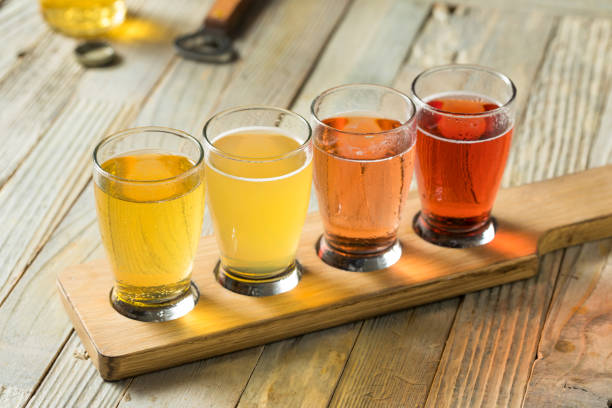Cider, a delicious and refreshing drink, has been enjoyed for centuries. It’s made by fermenting apple juice, which is then left to age for several months to develop its unique flavor. But have you ever wondered what goes on during the fermentation process? The magic behind it all lies in the work of tiny microorganisms called yeast. In this post, we’ll explore the role of yeast in cider making and dive into the science behind fermentation.
What is Fermentation?
Fermentation is a natural process that occurs when microorganisms such as yeast and bacteria break down carbohydrates into simpler compounds, such as alcohol and carbon dioxide. In cider making, the sugar in apple juice is fermented by yeast, producing alcohol and carbon dioxide. This process gives cider its distinct flavor and aroma.
The Role of Yeast in Cider Making:
Yeast plays a crucial role in cider making. It’s a type of fungus that feeds on sugar and converts it into alcohol and carbon dioxide. There are several types of yeast strains used in cider making, each with their own unique properties and flavors.
When yeast is added to apple juice, it begins to consume the sugar in the juice, breaking it down into alcohol and carbon dioxide. The alcohol content of the cider is determined by the amount of sugar in the apple juice and the efficiency of the yeast in converting it to alcohol.
Yeast also produces a range of other compounds during the fermentation process, such as esters and aldehydes, which contribute to the flavor and aroma of the finished cider.
Factors that Affect Fermentation:
Several factors can affect the fermentation process in cider making, such as the type of yeast used, temperature, and the amount of oxygen present.
Temperature: Yeast thrives in temperatures between 60°F to 75°F. A warmer temperature can speed up the fermentation process, but too high of a temperature can kill the yeast.
Oxygen: Yeast requires oxygen to reproduce and grow. However, once fermentation begins, too much oxygen can damage the yeast and affect the flavor of the cider.
Type of Yeast: Different strains of yeast have different properties and flavors. Some yeast strains produce fruity and floral flavors, while others produce earthy and spicy notes.
Enzymes: Enzymes present in the apple juice can also affect the fermentation process. Pectinase, for example, breaks down pectin in the juice, making it easier for the yeast to access the sugar.
Fermentation is a complex process that requires the right conditions to produce a delicious and refreshing cider. The role of yeast is crucial in converting sugar into alcohol and carbon dioxide, and producing the unique flavors and aromas that make cider so enjoyable. Understanding the science behind fermentation can help you appreciate the art of cider making and perhaps even inspire you to try your hand at brewing your own.
So next time you’re sipping on a cold glass of cider, take a moment to appreciate the magic of yeast and the fascinating process of fermentation that brought it to life.
References:




